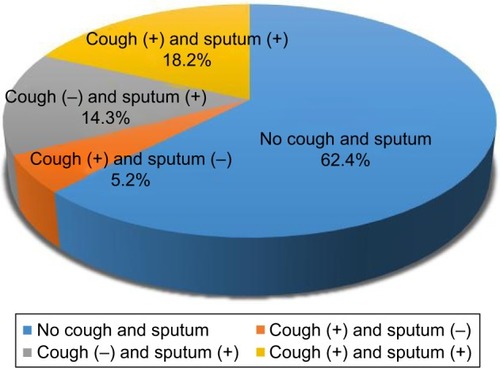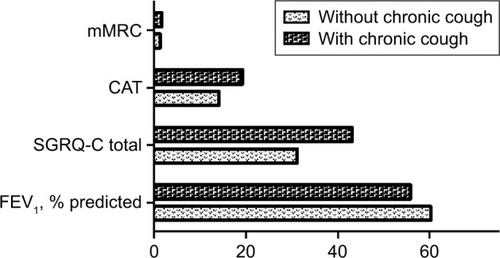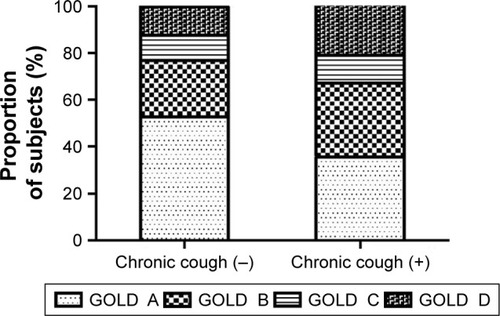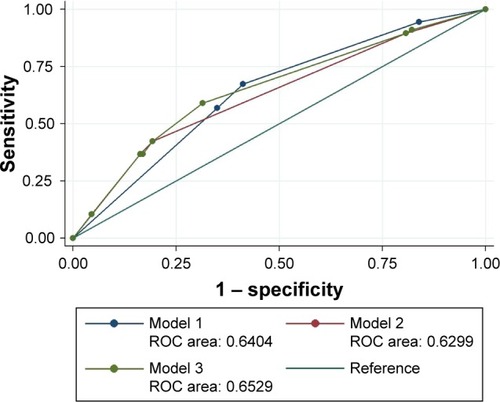Figures & data
Table 1 Baseline characteristics of patients with chronic obstructive pulmonary disease according to the presence of chronic cough
Figure 1 Distribution of patients according to presence of chronic cough and chronic sputum production in the study cohort of patients with chronic obstructive pulmonary disease.

Figure 2 Comparison of dyspnea, quality of life, and lung function between patients with COPD with chronic cough and those without chronic cough.
Abbreviations: COPD, chronic obstructive pulmonary disease; mMRC, modified Medical Research Council Dyspnea scale; CAT, COPD Assessment Test; SGRQ-C, COPD-specific version of St George’s Respiratory Questionnaire; FEV1, forced expiratory volume in 1 second.

Figure 3 Distribution of GOLD severity stages in patients with chronic obstructive pulmonary disease with chronic cough and those without chronic cough.

Table 2 Clinical characteristics of patients with chronic obstructive pulmonary disease exhibiting cough, sputum production, or both
Table 3 Multivariate analysis for the effects of chronic cough and chronic phlegm on the lung function, dyspnea, and quality of life in patients with chronic obstructive pulmonary disease
Table 4 Univariate and multivariate analyses for factors contributing to future AE of chronic obstructive pulmo nary disease
Figure 4 ROC analysis for the prediction of future acute exacerbation of chronic obstructive pulmonary disease.
Abbreviations: ROC, receiver operating characteristic; GOLD, Global Initiative for Obstructive Lung Disease.

